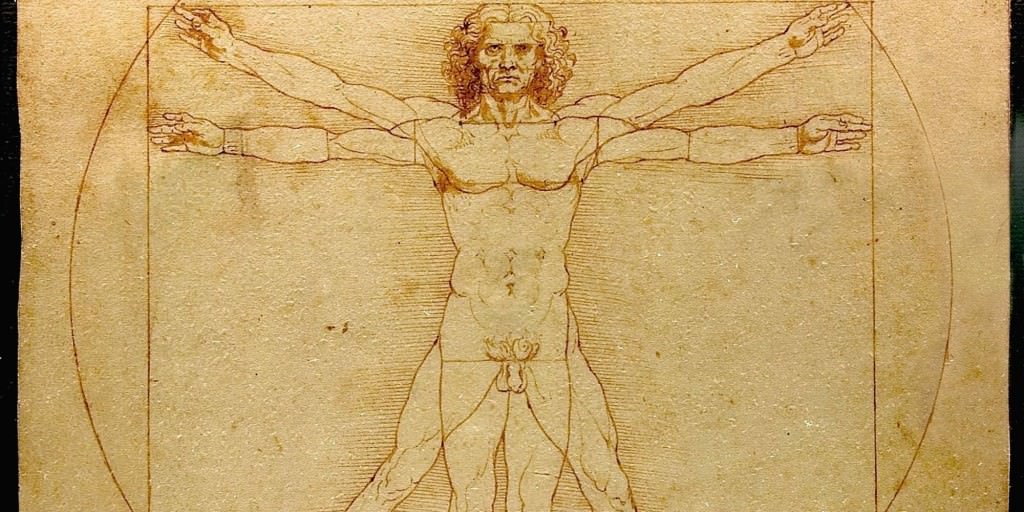
To thoroughly please your husband, you need to know a few things about his private bits. This is a very revealing in-depth article about male genitals. It takes you through each significant part of his penis and teaches you everything you need to know so that you can thoroughly satisfy your husband.
This is a great read for men too. You will probably learn things from this article as well.
Penis
At first glance his penis seems simple; when he gets aroused his penis gets firm. His penis is a very complicated hydraulic system that requires several systems to work in tandem to achieve an erection.
Penises are very individual. They come in a wide variety of shapes, sizes, and colors. Some grow a great deal when they become erect, while others become firm without much change in size. When erect some point straight out, others hang down, and still, others become almost vertical.
The penis is composed of three chambers; the two cavernous bodies (or corpora cavernosa) which lie side by side on top of the penis, and the spongy body (or corpus spongiosum) which is centered below the other two. The spongy body surrounds the urethra and extends from the end of the shaft to form the glans. All three chambers contain small hollow areas that can fill with blood to produce an erection. Surrounding all three bodies is a semi-elastic membrane called the tunica albuginea. The arteries that feed blood to the penis are surrounded by smooth muscle fibers that normally limit blood flow to the penis. When a man is aroused by thought, sight, or physical stimulation, the muscle fiber relaxes, and blood flows into the penis increases. The spongy tissue of the penis fills with blood, causing the penis to swell. The size of the erect penis is governed by the semi-elastic membrane, just as a bicycle tire limits the expansion of the inner tube inside it. As with a bike tire, once the limit of the membrane is reached, further pressure results in firmness rather than expansion. The veins that drain the penis, which lie close to the surface, are compressed by the erection, thus slowing the flow of blood from the penis.
The part of the penis that is visible is only about half of the whole organ. The root of the penis is the portion of the penis that is inside the body. The root is attached to bone at its base, and this serves to anchor the penis and allows it to stand away from the body during erection.
Some men worry about the size of their penis. Since only the first 2 to 3 inches of the vagina has nerve endings, length has little to do with pleasing a wife during intercourse. Statistically, 90% of erect penises are 6 inches or shorter. Non-erect size is not an accurate determiner of erect size.
Shaft
The shaft of the penis contains neither bone nor any significant amount of muscle. The shaft is wider than it is high, and one side usually bulges out more than the other. The erect penis is very tough, it can be squeezed quite firmly without causing pain or damage. The most common complaint men have about the way their wife handles their penis is “she’s too gentle.”
Root Of The Penis
Only about half the penis shows externally, the rest is inside the body. The internal part of the penis also becomes erect. The cavernous bodies attach to the pelvic bone, while the spongy body continues back almost to the anus; during erection, this part of the penis can be felt behind the scrotum.
Glans
Also called the head of the penis, the glans contain a large number of nerve endings, making it the most sensitive part of the penis. The frenulum is the most sensitive area, the corona the second most sensitive area. In most men, the glans are hypersensitive right after orgasm.
Foreskin
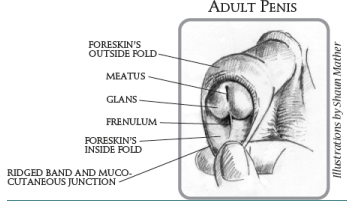 At birth the glans is covered by a retractable skin called the foreskin, which is frequently removed by circumcision. Aside from religious reasons, circumcision has been normally performed for supposed hygienic reasons. Recent data suggest that daily washing is as effective as circumcision in maintaining cleanliness and that the foreskin serves several purposes. Circumcision is a routine operation in America, but virtually nonexistent (other than for religious reasons) in Europe.
At birth the glans is covered by a retractable skin called the foreskin, which is frequently removed by circumcision. Aside from religious reasons, circumcision has been normally performed for supposed hygienic reasons. Recent data suggest that daily washing is as effective as circumcision in maintaining cleanliness and that the foreskin serves several purposes. Circumcision is a routine operation in America, but virtually nonexistent (other than for religious reasons) in Europe.
Frenulum
The skin that connects the head of the penis to the shaft on the underside of the penis is called the frenulum. This area of skin is the most sensitive part of the penis. Licking, sucking, touching, and vibration feel great in this area.
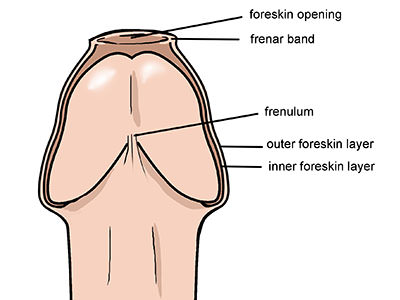
Scrotum
The scrotum is composed of skin and muscle and is designed to pull the testicles closer to the body for warmth and to hang away from the body for cooling. The scrotum also pulls the testicles towards the body during sexual excitement, and at the climax, they are held tightly against the body. One side of the scrotum, usually the left, hangs slightly lower to keep the testicles from knocking together when a man walks or runs.
Testicles
Also called the testes. Both sperm and male sex hormones are produced by the testicles. Sperm production requires a temperature slightly below normal body temperature, and new research suggests that temperature also affects hormone production. The testicles are very sensitive to pressure; even a slight bump can be painful. While many men like to have their testicles stimulated, the wife should use great care.
Epididymis
Once produced in the testicles, sperm moves into the epididymis to “ripen”. At this point the sperm is inactive, being moved by the body, not by swimming.
Vas Deferens
The vas deferens are thin tubes that transport sperm from the epididymis up into the body.
Seminal Vesicles
The vas deferens end near the seminal vesicles, which produce part of the fluid ejaculated with the sperm. See Physiology of the Male Sex Drive for more information.
Prostate
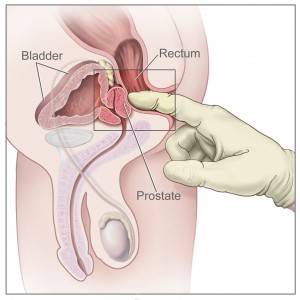 This gland produces a part of the seminal fluid, begins the ejaculation process, and keeps semen and urine from mixing. The prostate produces small amounts of fluid continually but accelerates greatly during sexual arousal. Since a man’s enjoyment of orgasm is affected by the quantity of his ejaculation, the extra fluid produced during prolonged arousal can lead to a stronger climax. Prostatitis or congested prostate is a painful condition caused by repeated arousal without ejaculation, or by a “feast-or-famine” sex life (such as that of a traveling salesman). Mild cases can be easily remedied by climaxing. More serious cases require prescription medication and massaging of the prostate by a physician. As a man ages his prostate swells, often interfering with normal urination. Prostate cancer is very common in older men, although it is treatable if found early by routine screening.
This gland produces a part of the seminal fluid, begins the ejaculation process, and keeps semen and urine from mixing. The prostate produces small amounts of fluid continually but accelerates greatly during sexual arousal. Since a man’s enjoyment of orgasm is affected by the quantity of his ejaculation, the extra fluid produced during prolonged arousal can lead to a stronger climax. Prostatitis or congested prostate is a painful condition caused by repeated arousal without ejaculation, or by a “feast-or-famine” sex life (such as that of a traveling salesman). Mild cases can be easily remedied by climaxing. More serious cases require prescription medication and massaging of the prostate by a physician. As a man ages his prostate swells, often interfering with normal urination. Prostate cancer is very common in older men, although it is treatable if found early by routine screening.
Sphincters
Small valves, the sphincters control the flow of urine and semen in the prostate. The upper sphincter prevents semen from moving into the bladder during ejaculation; it also makes it more and more difficult for a man to urinate as he becomes increasingly erect. The lower sphincter helps pressurize the semen just before ejaculation.
Ejaculatory Duct
An area of the urethra in the prostate between the sphincters. The sperm and various fluids mix in this area as ejaculation begins, the closed sphincters and muscle contractions creating a pressurized system. Once this happens, the climax cannot be stopped.
Cowper’s Glands
These two pea-sized glands produce a slippery alkaline fluid when the man is aroused. This fluid prepares the urethra for ejaculation. During prolonged arousal, the fluid may form drops at the tip of the penis. Sperm is not present in this fluid.
Semen
A mixture of sperm cells (less than 1%) and fluids from the prostate (30%) and seminal vesicles (70%). A typical ejaculation is about a teaspoon of fluid and can contain up to 600 million sperm.
Orgasm
This is the pleasurable feeling of sexual climax. In men, orgasm lasts from four to eight seconds and is more powerful if arousal is prolonged, or it’s been a long time since his last climax. Boys who begin masturbating before puberty experience “dry climaxes”; orgasm without ejaculation. Although rare, it is possible for a grown man to orgasm without ejaculating. Following orgasm the glans become hypersensitive. In a few men, the sensitivity is so extreme that they are unable to continue intercourse following orgasm.
Ejaculation
The expulsion of semen from the penis. Ejaculation normally happens along with orgasm, although it can be caused separately. Ejaculation happens in two distinct parts. The first, the emission phase, causes sperm and fluid to mix in the ejaculatory duct, while the sphincters close and muscles contract. During this time the man feels what is called “ejaculatory inevitability” (or the point of no return). The second, or expulsion phase, occurs when the lower sphincter opens, forcing the semen out into the penis. Contractions in the base of the penis help propel semen out of the body. Most of the fluid is ejected in the first few contractions, but the penis may continue to contract sporadically for 15 to 20 seconds, particularly after prolonged arousal. The amount of semen in ejaculation is normally about a teaspoon full, but this varies from man to man. If a man has two ejaculations in a short period of time the second will be very small.
Resolution
Following ejaculation, the penis returns to its non-erect state. There is a rapid partial loss of erection, followed by a much slower loss of the remaining erection. The second stage of loss seems to be slower after prolonged sex. Resolution refers to the period of time after ejaculation during which a man can’t have another erection. Overall, the length of the resolution phase is related to age, being minutes in teens and possibly days in elderly men; but this varies greatly, and seems to be affected by sexual frequency, with the least active men having the longest resolution phases as they age.
Join thousands of couples, sign up for our email newsletter, and get notified of new techniques as soon as they're published.

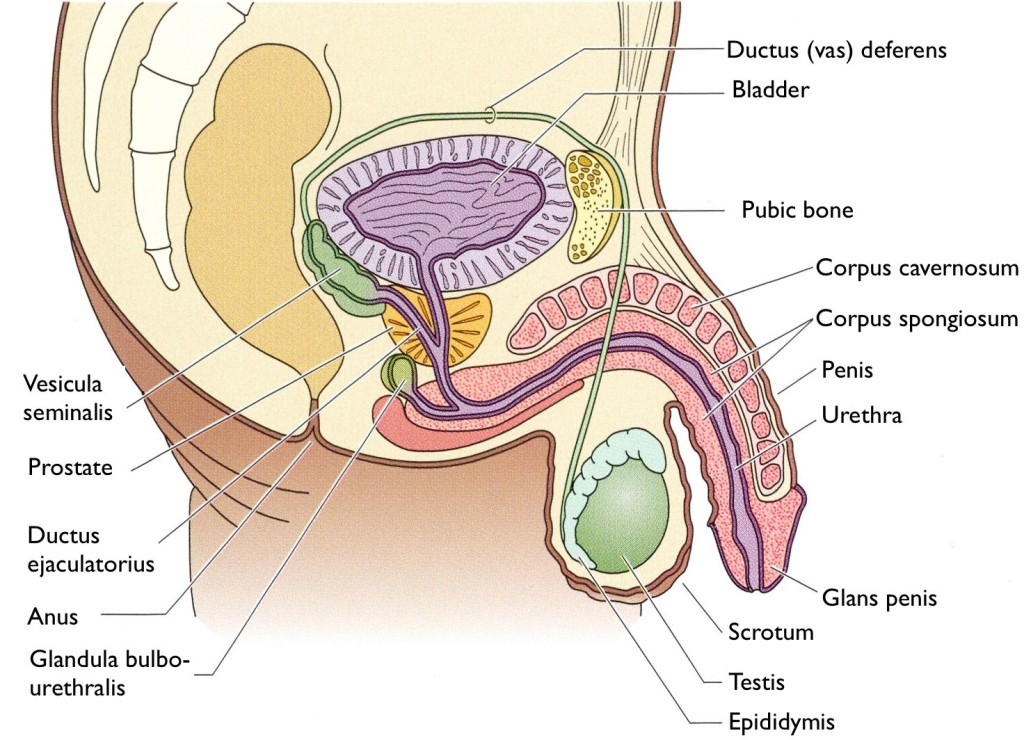

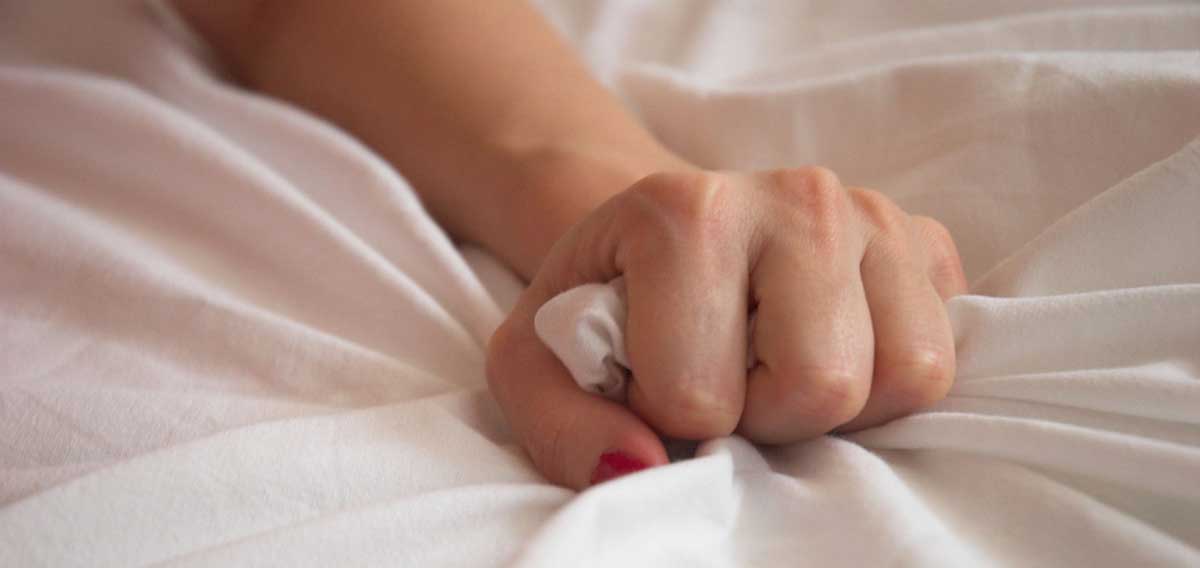


Leave a Reply